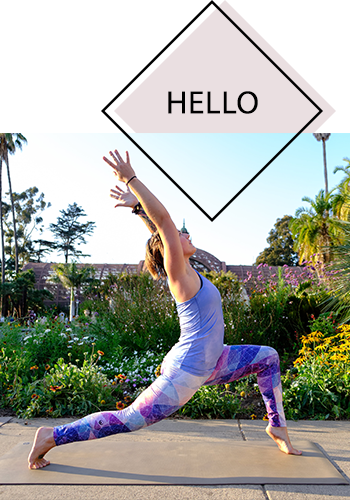Run, Yoga, Run: The Bikram Athlete
/
Photo illustration via Blow Up Studios and their ad campaign for Pure Yoga.
Perhaps you've had to mix up your workout this week because of inclement weather. By engaging in other core-building or stamina-enhancing exercise, we can improve our yoga practice.
Sometimes we need to mix it up in order to improve not only our physical health, but our mental health, too. The repetitive nature of Bikram yoga (as a result of the dialogue and our familiarity with the 26-posture sequence) makes it tempting to zone out during class -- to disengage, stop listening, and go with what we know.
At those moments, we risk injury.
Often it can be great to mix up your work out routine by adding different styles of yoga or different cardio activities to your schedule.
Do any of you readers do Bikram on the side? Maybe you are into cross training, running, swimming, or biking -- but you find yoga to be a great complement to your other athletic endeavors.
No matter what your first fitness love is, Bikram can help you build the strength and flexibility you need to perform at your best, and live your healthiest life.
Photo illustration via Blow Up Studios.
You Gotta Have: Total-Body Conditioning
(not simply strong quads)
Consistent running can lead to a lot of tightness and strain in the spine, shoulders, hamstrings, and hips. This is why it is so important to condition and stretch those areas to develop more strength and movement to your body.(not simply strong quads)
Try the following cross-training exercise to build arm strength and flexibility.
EXERCISE: Push-up; one of the best exercise for muscles of the chest (pectorals), arms (bicep and triceps) and core development.
Start face down on the floor with your feet together curled slightly so you rise on the ball of your feet. Place you hands close together so your thumbs and index fingers form a triangle on the floor. Keep your stomach contracted.
Inhale as you raise your body up till your arms are straight. Keep your head and neck level with your body and back straight. Exhale out as you lower your body back to the ground.
Photo via mewall82 on Flickr.
You Gotta Be: Pain Free!
Bikram Yoga will put an end to the tightness that leads to pain by opening up your joints and stretching all your ligaments, tendons, and muscles. Remember that running doesn't use ALL your muscles. You need a pose that will utilize your whole body.
Try the following Bikram Yoga pose to help straighten rounded spines and relieve backaches. This pose will also increase circulation to the spine and strengthen the abs, arms, thighs, and hips.It will improve the flexibility of the scapula, deltoids, and traps.
POSE: Bow Pose; Start lying on your stomach, bend your knees and bring your feet down towards your glutes. Reach back with your arms, take hold of each foot from the outside, grasping about two inches below the toes. Keep your feet and knees six inches apart throughout the pose. Take a deep breathe, look up towards the ceiling and lift thighs and upper body off the floor. Kick back lifting legs higher off the floor. The main goal is to balance on your abdomen. Hold pose for 20 seconds while breathing in and out through the nose.
Photo via creativENERGYoga on Flickr.
You Gotta Have: Agility, Coordination, and Balance
Agility, coordination, and balance are also important factors in day-to-day activities, such as standing and walking or (running). Try the following Cross-training exercise to improve these basic functions.
EXERCISE: Jump Rope; Holding the jump rope handles, one in each hand, the rope should be resting on the ground directly behind your feet. Your head should be up, eyes looking forward, not down at your feet. Your elbows should be positioned in close to your body. During the jump, your body should be erect. A basic jump is straight up and down and about 1 inch high. The rope gets its momentum with a basic swing of the wrist and forearms. The knees should flex and extend slightly with each jump. As you jump, try to develop a rhythm (the speed at which the rope turns).
Photo via kait.rich on Flickr.
Bottom line? Mix up your work out and balance it out with some hot yoga! You'll be happy you did when the winter storm hits and you don't have to pull any muscles while shoveling snow.
Have any other advice on how to adapt to Bikram as an athlete? I'd love to hear from you, runners, swimmers, bikers, and tri-athletes! Leave a comment below.
Photo illustration via Blow Up Studios.











